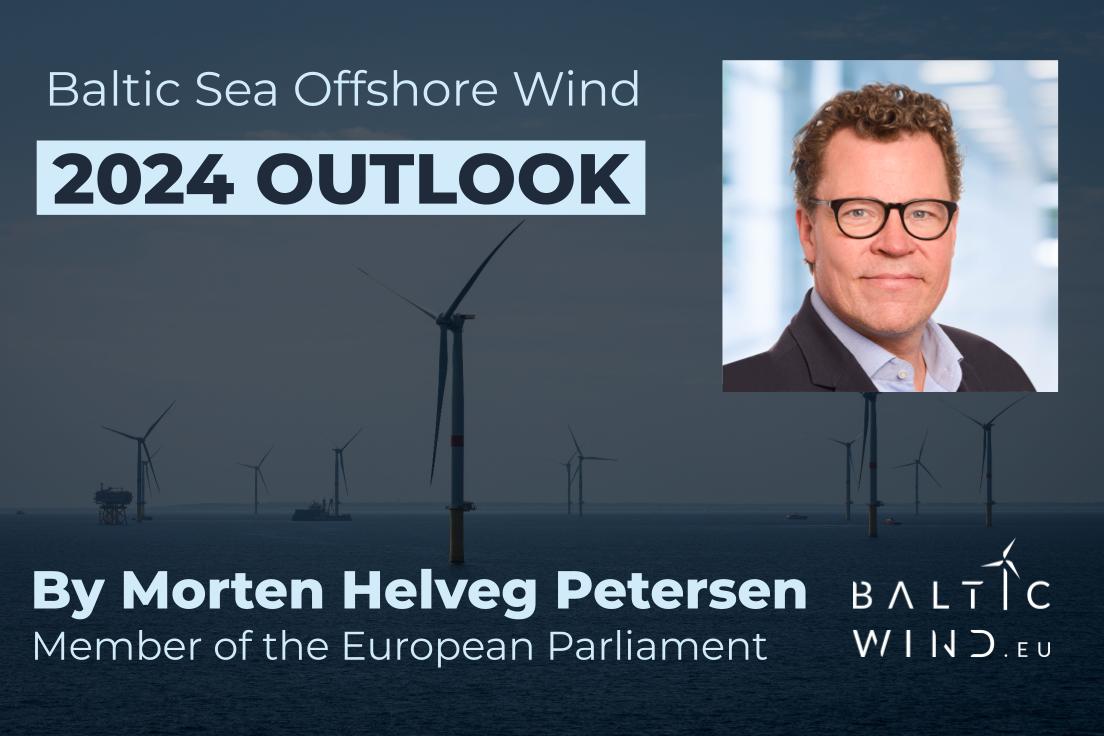BalticWind.EU asked industry leaders and key policy-makers for their assessment of what has been achieved in the past year and what the forecasts are for 2024. In today’s interview of the „Baltic Sea Offshore Wind – 2024 Outlook” series, we present the opinion of Morten Helveg Petersen, Member of the European Parliament, Denmark, Renew Europe.
What is the most significant development for the offshore wind in 2023?
The Commission introduced a ‘European Wind Power Package’ in 2023. I am generally content with the initiatives and guidelines laid out by the Commission. New standards for auction design have been introduced, considering biodiversity and human rights, both for ethical considerations and to ensure European competitiveness.
The Chinese industry might be cheaper but does not prioritize the wellbeing of nature and people. Thus, the European industry becomes the sustainable choice for investors.
Moreover, the Commission is now committed to expediting the permitting process in member states. The call for quicker permitting is not novel, as the Commission has often vocalized this need without much success. The permitting process in member states has languished for many years, rendering the market too uncertain for substantial investment, thereby impeding progress toward climate targets and energy independence.
In its presentation, the Commission affirmed its willingness to support member states in expediting permitting through technical assistance and education. In essence, the Commission is reinforcing its call to action, demonstrating a willingness to act instead of merely speaking, and I really hope that member states will follow suit. We really need to work for quicker permitting. For the sake of our green transition and our safety.
What are the most important challenges for offshore wind development in 2024?
I led the negotiations of the EP negotiations Offshore Renewables Energy Strategy, which was unveiled in early 2022. The strategy tackled a multitude of obstacles to the implementation of offshore renewables, charting a path toward European global exports success. However, less than two years later, Europe’s position as a worldwide wind technology leader is jeopardized by inflation, supply chain disruptions, exorbitant interest rates, sluggish permitting procedures, and the unjust competition posed by state-subsidized Chinese manufacturers. Media reports are now rife with accounts of major wind projects faltering on a weekly basis.
Undoubtedly, the European wind industry is pivotal to the EU. With our goal of reducing emissions by 55 percent before 2030, a significant increase in renewables is imperative to achieve our climate targets. To put this into perspective, we have committed to elevating the share of renewables in the bloc’s overall energy mix to 42.5 percent by 2030, a substantial leap from the current 17 percent. Such an ambitious endeavor hinges heavily on the wind industry. Thus, the bottlenecks impeding the wind industry’s progress are cause for alarm. If we fail to heed these warnings, Europe’s position may falter, allowing China to gain a stronghold on the market.
What matters related to offshore wind energy will you particularly focus on in 2024?
As the European Parliament’s lead lawmaker on offshore renewables, I have engaged extensively with industry stakeholders, as well as Energy Commissioner Kadri Simson. Our aim is clear: We must ensure that European manufacturers have access to the necessary supplies, establish transparency and predictability for green investors, streamline bureaucratic hurdles, and safeguard the industry from unfair competition. The race in the wind industry is far from over, but we must labor effectively and diligently to uphold Europe’s leading position in the field.













